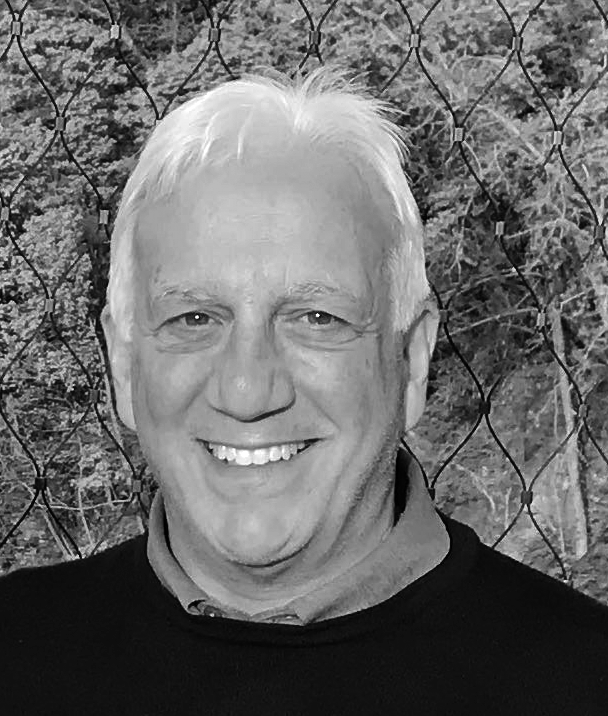Real Lab, Real Experiments, Real Progress for Allied Microbiota

It’s been a busy three years for Allied Microbiota, an environmental-remediation specialist with next-generation tech in hand and expansion in mind.
When then-Columbia University microbiologist Raymond Sambrotto’s cutting-edge biotech relocated from Brooklyn to the Advanced Energy Research and Technology Center in 2019, it was in experimental mode – hence the move, which afforded the 2017 startup a 950-square-foot laboratory and access to world-class equipment.
It was just what Dr. Sambrotto ordered. Allied Microbiota had already proved out its science – specially designed microorganisms with a taste for PCBs (foul polychlorinated biphenyls), excellent at clearing contamination – and was ready to scale up, something that required constant experimentation.
“This is a real lab with real experiments,” Dr. Sambrotto notes. “We have to do these studies to see if we can break down these products and see how fast we can break them down.
“It’s all benchtop-based stuff,” he adds. “And we were able to do it in a big laboratory with state-of-the-art ventilation, backup power … everything we needed to do the R&D we needed to do.”
What they did – through laborious lab work and fruitful collaborations with New Jersey-based environmental engineering firm Clean Earth – was prove their soil-remediation science was scalable and ready for bigger stages, figuratively and literally.
“Soil remediation is the mother of all remediation issues,” Dr. Sambrotto notes. “There are huge volumes of soil that need to be remediated and huge amounts of dredge spoils that come up each year in ports and harbors that also need to be remediated.”
And those needs are growing on two fronts: the ever-increasing tons of contaminated soil unearthed annually and changing views on what to do with that dirty dirt.
“There is definitely a move toward decontaminating the material, rather than just dumping it in a landfill,” Dr. Sambrotto says. “People are looking for more sustainable, carbon-friendly ways of doing this … not just digging it up and trucking it to a landfill.”
While steadily establishing its contaminated-land legs, Allied Microbiota’s lab work also carved paths toward additional remediation markets. Dirty air, for instance, was the challenge in a recent job for a North Carolina particle-board manufacturer.
Most particle boards are created by pasting together wood chips with a formaldehyde-based glue, which turns gaseous (and toxic) during the board-drying process. The North Carolina manufacturer was working with another remediation company whose bio-treatment process – essentially, pushing the bad air through a pool of treated swamp water, where naturally occurring microbes feasted on the formaldehyde – was “hit or miss,” according to Dr. Sambrotto.
Enter Allied Microbiota, which dispatched what the scientist called “bespoke bacteria” – essentially, microbes bred specifically for the job at hand – in a similar water-washing process.
“We got a much better result,” Dr. Sambrotto says, noting his company was able to keep formaldehyde levels below EPA levels in 200,000 cubic feet of recycled air per minute – a much faster success rate than the other guy. “Speed was the selling point.”
Allied Microbiota has also dipped its toes into water remediation – specifically, nitrogen-heavy wastewater flowing out of landfills, a serious threat to fresh groundwater sources.
Landfill leachate is “pretty nasty stuff,” according to Dr. Sambrotto, but not nastier than Allied Microbiota’s bacterial army, which has helped multiple Upstate New York municipalities meet their wastewater limits – another success that not only expands the company’s bottom line but proves its scientific mettle against a range of contaminants, in various arenas.
That leads directly to the next big vertical – emerging contaminants – and introduces what Dr. Sambrotto describes as the new Big Bad of pollutants: PFAS, stage name for “per- and polyfluoroalkyl substances,” a phantom menace that’s lurked in consumer products (nonstick cookware, stain-resistant carpets and more) for 70 years.
Both “biopersistent” (meaning they remain unchanged, indefinitely, inside organisms that ingest them) and “bioaccumulative” (meaning they build up over time), PFAS are an increasing threat to people, the animal kingdom and the environment at large.
Lamenting “another category of probable carcinogens,” Dr. Sambrotto says Allied Microbiota is on the job, with “the first commercial treatment based on biology for destroying PFAS” in development.
Exploring these hot verticals might have seemed a stretch three short years (and one long pandemic) ago, when Allied Microbiota’s state-of-the-art microbes were test-cleaning industrial steel drums. But relocating to the AERTC quickly proved wise – and Dr. Sambrotto, now retired from Columbia University, has proved to be a more-than-adequate chief executive.
Not that he wouldn’t gladly surrender the corner office.
“I should be doing a mixture of R&D and business development,” he says. “Nobody can present the company like I can – it’s my baby and I know the ins and outs of everything, which makes me a good spokesman and good person to speak to customers.
“I’ve grown into the CEO role out of necessity,” Dr. Sambrotto adds. “But I’d rather be seeing what clients need and figuring out how we can develop new products and new biological approaches.”
